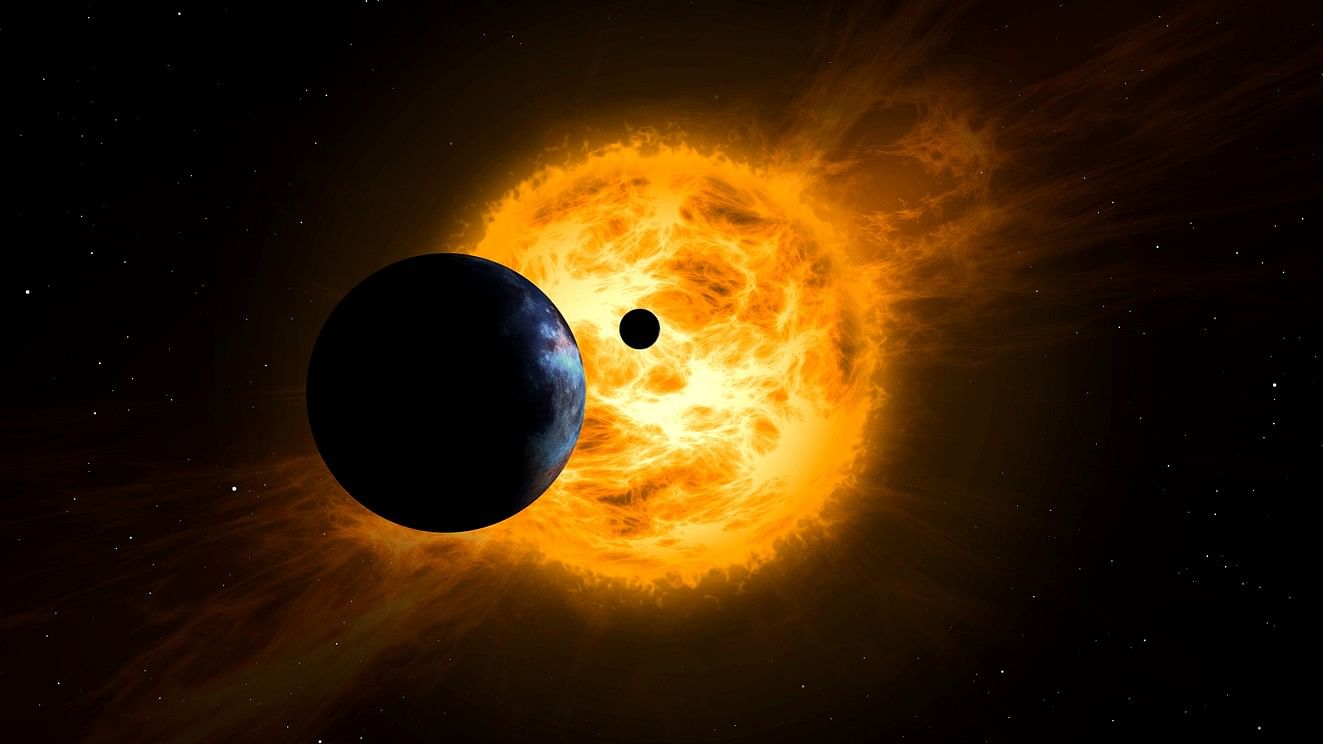
Representative image showing planets in the solar system.
Credit: iStock Photo
Bengaluru: New research on the internal thermal evolution of coronal mass ejections (CMEs) has provided crucial insights into the heat budget of these ejections and could help predict the impact of space weather on planets in our solar system.
When directed toward the earth, the CMEs— massive eruptions of plasma and magnetic fields from the sun’s corona, its outermost atmosphere can disrupt the earth’s space weather and space-based infrastructure. The heat budget refers to a balance between incoming and outgoing heat.
The dynamics of heat as it intensifies and cools down during a CME, from the eruption till it reaches the earth’s atmosphere, is largely unexplored. While near-sun spectroscopic observations and near-earth in-situ observations are being carried out, they are insufficient in understanding the evolution of CMEs at intermediate/interplanetary distances between the sun and the earth.
Researchers at the Indian Institute of Astrophysics (IIA) in Bengaluru, along with international collaborators, have modeled the continuous thermodynamic evolution of CMEs which is critical for understanding the sun-earth connection. They applied the model to two specific CMEs from the past (on September 24, 2011, and August 20, 2018) and had data from multiple telescopes and spacecraft.
Soumyaranjan Khuntia, the lead author and a doctoral student at IIA, said the study marked a “novel trend” of research and derived a comprehensive evolution profile of CME thermodynamic parameters leveraging the analytical called the Flux Rope Internal State model. “The indigenously developed model takes inputs from the wide-field-of-view coronagraphic white-light observations,” he said.
The researchers worked with data from NASA and ESA space missions like SOHO (SOlar and Heliospheric Observatory), STEREO (Solar TErrestrial RElation Observatory), SDO (Solar Dynamics Observatory), and the indigenously developed model. They found that the fast CME, during its early phase marked by rapid deceleration, released heat, and the slow CME, while in gradual acceleration, showed evidence of heat absorption.
However, both the fast and slow CMEs exhibit heat-absorption tendencies and keep a steady temperature in their later phases away from the sun, the Department of Science and Technology said in a statement on the research findings, accepted for publication in The Astrophysical Journal.
Wageesh Mishra, a faculty at IIA, said the observations returned a significant finding, that CMEs undergo processes that involve the release or absorption of heat during their journey through the heliosphere.
"Our findings also underscore the roles of distinct forces in CME expansion. Centrifugal and thermal pressure forces primarily contribute to the expansion of the CMEs, while the electromagnetic force prevents the expansion throughout,” he said.
Aditya-L1 payload to take research forward
Mishra said observations from the Visible Emission Line Coronagraph onboard Aditya-L1, India's first space-based solar observatory, could supplement the newly developed model to understand CMEs in greater detail.
Khuntia noted that the capability to estimate the CMEs’ heat content and their impact on the earth's magnetic field needs to be better understood. “To mitigate the forecasted space weather impacts, we are further investigating if the thermal properties of CMEs could be used as markers for their potential to cause intense space weather phenomena," he said.
The study is co-authored by Wageesh Mishra, Sudheer K Mishra from the Astronomical Observatory, Kyoto University, Japan, Yuming Wang, and Shaoyu Lyu from the CAS Key Laboratory of Geospace Environment, University of Science and Technology of China, and Jie Zhang from the Department of Physics and Astronomy, George Mason University, USA.